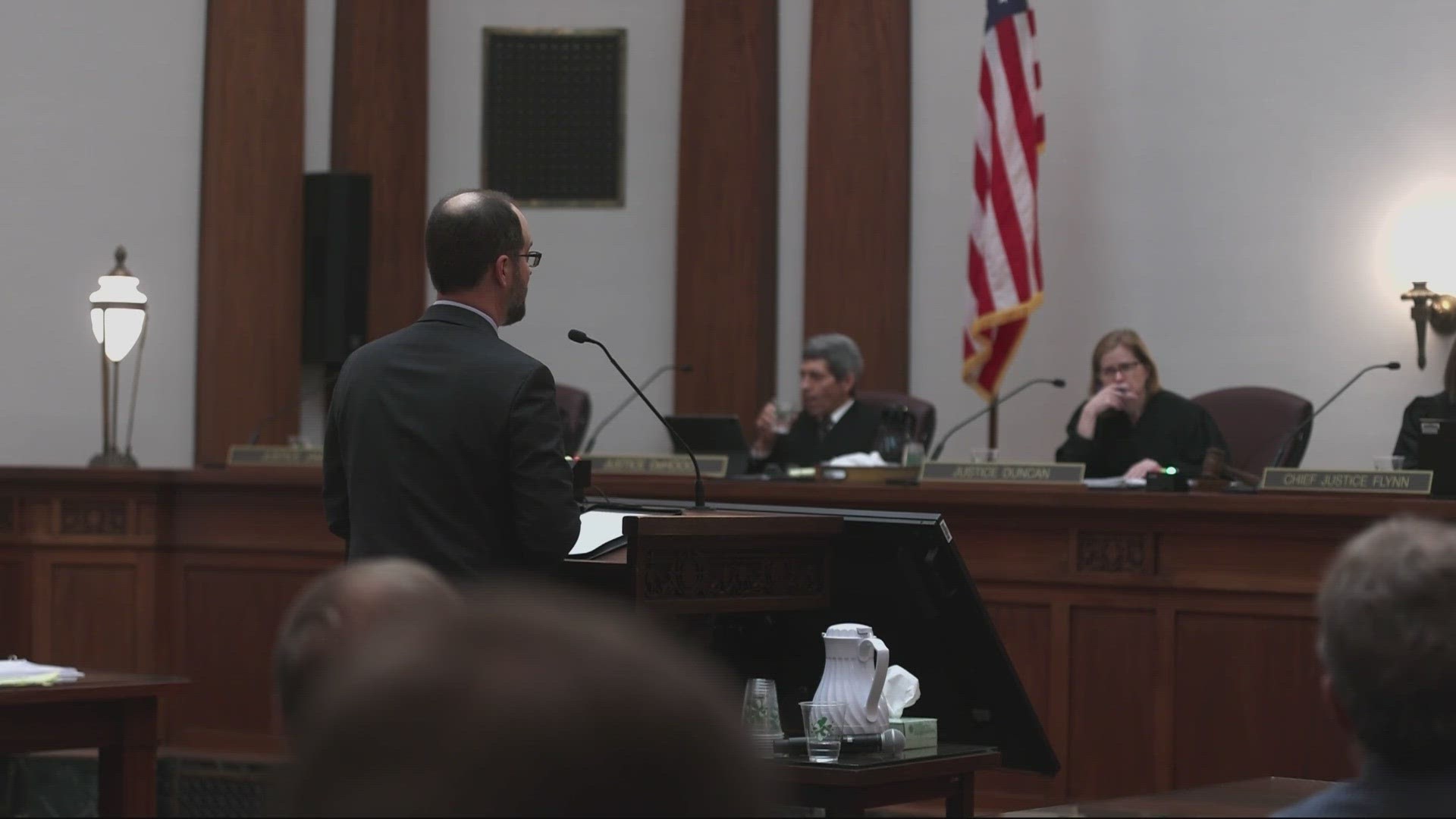SALEM, Ore. — The Oregon Supreme Court is set to decide the political fate of eight Republican senators who participated in a 6-week walkout earlier this year, stalling state government. Justices will rule on the meaning of Measure 113, Oregon’s anti-walkout measure.
Republican senators are challenging the Secretary of State’s ruling that they should be barred from the upcoming term after accruing 10 or more unexcused absences during the 2023 walkout.
Lawyers for the group of senators and the Secretary of State presented their arguments to the state supreme court on Thursday, with justices now tasked with ruling on a legal loophole in the wording of Measure 113.
A key sentence in the text of Measure 113 adopted into the Oregon Constitution — "for the term following the election after the member's current term is completed" — could save the senators' immediate political futures.
RELATED: Republicans believe Measure 113 language allows them to be re-elected again despite walkout
The group of senators, represented by attorney John DiLorenzo in court, believe any disqualification from office via Measure 113 would apply up to four years from now, because elections take place before terms officially end.
For example, Senator Tim Knopp's current term expires on January 12, 2025. He wants to run for re-election in the November 5, 2024 election. Based on the senators' literal interpretation of the text, any punishment for the walkout would apply in the 2028 election for a term beginning in 2029, if Knopp were to be allowed to run and get re-elected in November.
"I don't think the state has much of a leg to stand on here, the Secretary of State is interpreting (Measure 113) to mean something it doesn't say," Knopp said after the hearing Thursday. "The only thing you can say is what the voters intended, but that's not what the language actually says and goes into the constitution."
DiLorenzo told the Supreme Court justices that the language of Measure 113 is unambiguous, there's no other way to read it.
"You should adhere to your precedents, you should not construct a new rule, and allow the legislature or voters to fix the problem," DiLorenzo said.
RELATED: Despite ongoing lawsuit, Oregon GOP senator disqualified after walkout says he won't seek reelection
Measure 113 was intended to dissuade senators from walking out on the job, thereby stopping all legislative sessions without a quorum.
Accompanying documents, ballot guides and voter explanations — including an explanatory statement drafted in part by one of the Republican senators participating in the lawsuit, Sen. Dennis Linthicum — described the measure as barring any violating legislator from a subsequent term.
“The ballot title caption, for example, which appeared right above 'Yes' and 'No' bubbles that voters filled in on their ballot, is unambiguously clear that this disqualification apply for these legislators' next term of office," said Dustin Buehler, attorney representing the Oregon Secretary of State at the hearing.
However, DiLorenzo argued that the ballot explanation was flawed and misguided, not an accurate description of the actual text of the measure.
“These were just explanatory tools, and you know what? They were wrong," he said. "The arguments in the ballot title sold this measure based on assumptions that were wrong.”
Buehler, while arguing that there could be an alternative interpretation of the text that supports the Secretary of State's ruling, admitted that the actual wording is problematic.
"This is clunky, this is inelegant, I’m sure the drafter wishes for a mulligan on it, but it still is enough to articulate what the voters were trying to do here," he said.
Supreme Court justices asked critical questions of both sides, including why voter intent should be ignored, and why supporting text should be more significant than the actual wording of Measure 113.
"The reason why this court does not interpret constitutional text in isolation is because there is a significant risk in that doing so it will subvert clear voter intent," Buehler said.
Chief Justice Meagan Flynn asked why no one noticed this incongruent wording of Measure 113 at the time.
DiLorenzo answered that it was a case of compounding error and it's impossible to know what each voter actually thought. Buehler countered that it was just not believable that Measure 113 would be interpreted any other way.
"This was vetted by a lot of people, no one mentioned this until after the 2023 walkout was underway, and I think that's telling," he said.
A Justice Department official said the Supreme Court is expected to "fast-track" their decision because of the pressing impact on legislative races in 2024. Knopp said he expects to know before March. Therefore, justices are projected to release a ruling by sometime in February, within the next two months.

